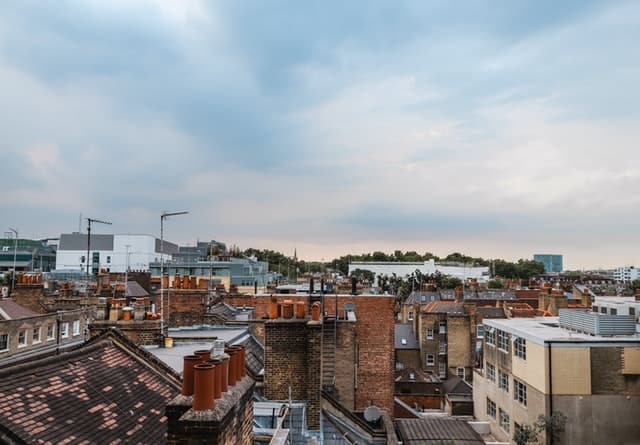
How to Prevent Damp
Anyone who has lived in the UK for any time will know that we are not blessed with the driest of climates in this country. With quite a lot of wet weather in the UK throughout the year, even in the summertime, it’s no surprise that most properties in the UK are going to suffer from damp problems at some point. Damp and mould issues are quite commonplace in British properties due to the wet weather and can occur for several reasons. However, one type of damp that is often more serious than the others is rising damp.
Unlike penetrating damp, which comes through the brickwork from outside and can usually be repaired by applying damp proofing treatment to the exterior walls, rising damp is almost always a sign that there is an issue with the damp proof course at the property.
How to Cure Rising Damp on Internal Walls
Rising damp on the internal walls can be an unsightly issue to deal with in the home. If left unchecked, it can also cause more serious structural problems within the property and can be quite costly and time-consuming to repair. Over time, rising damp on the internal walls may lead to mould, which can be quite harmful to your health if you have allergies or asthma, as the spores from the mould can cause respiratory problems. Along with being ugly to look at, rising damp can cause a nasty, musty smell in your home too. If you have noticed any of the signs of rising damp, knowing how to cure the damp on internal walls and prevent it from reappearing is important.
Since rising damp is almost always caused by an issue with the damp proof course, the best thing to do is contact a damp specialist who can carry out a full inspection of the damp proof course to ensure that it is present, working effectively, and has not been bridged. Various damp proof course problems might lead to rising damp, so having a professional inspection will help you determine the root cause and decide on the best course of action to take when it comes to repairing the damp.
How to Prevent Rising Damp
Whether you’ve just had a rising damp treatment on your property or have bought a new home and want to make sure that you are doing everything you can to prevent rising damp in the future, the good news is that there are several options.
First all of, you should make sure that there is a damp proof course present at the property and consider having it checked for any signs of damage that might render it ineffective. While damp proof courses have been a mandatory building requirement in the UK for new homes built since the early 1900s, some of those older homes still have their original damp proof courses, which are understandably not working as well as they could due to being decades old. Along with this, modern damp proof courses are much more effective and durable, so it might be worth having a new damp proof course installed if the one at your home is getting on a bit.
Further Prevention of Rising Damp
Another action you can take to help prevent rising damp at your property is to watch out for bridging. Bridging of the damp proof course occurs when something else such as a structure, higher ground next to the property, a blockage in the cavity wall due to debris or even your neighbour’s damp proof course if you share a wall, creates a bridge that moisture can get over and into your walls, bypassing your damp proof course. If you are planning any building work or work on your garden that might involve higher ground or the building of structures close to the external wall, it is important to know exactly how high up your damp proof course is so that you don’t end up building something higher up and creating a bridge that can lead to rising damp in the future.
Rising Damp Cure Options
If you have the signs of rising damp in your property then a specialist can help. The first thing that they will do is check the damp proof course to ensure that it is working correctly, or to see if it has become bridged. The cure for the rising damp in your property will depend on the type of damp proof course issue that you are dealing with. If you’re in an older property with no damp proof course present, you will need to have one installed to prevent any further damp issues. This is typically done by a specialist who will inject special water-resistant chemicals into the brickwork of your home at around six inches above ground level.
You may also need to have a new damp proof course installed at your property if the current one is no longer working as effectively as it should due to deterioration over time or damage. This is typically carried out in a similar way to how a new damp proof course is installed on a property that does not have one.
Finally, if bridging of the damp proof course is the main problem, then you may not always need to have a new damp proof course if yours is working as it should other than the bridge. However, bear in mind that there are some instances where certain types of bridging might lead to you needing to have a new damp proof course installed. For example, if your neighbour’s damp proof course has created a bridge because it is installed higher up than yours, then the best option may be to have a new damp proof course put in at the same height. On the other hand, issues like higher ground, structures, and blockages in the cavity wall can all be dealt with without having to make any changes to the damp proof course itself.
Once you’ve dealt with the root of the problem, the next step is to deal with the damage that the rising damp may have caused to your internal walls. Redecorating is not uncommon after dealing with rising damp since the issue can cause all kinds of nasty discolouration issues on your internal ground floor walls. Depending on how long the rising damp has been going on for, you might find that the walls are too damp to redecorate over simply, and you may need to get further damp treatments and/or have them replastered to repair the damage. If mould is present, then you may want to consider treating the walls with an anti-fungal treatment before you start any redecoration. Finally, before repaint or re-wallpaper, consider adding a layer of damp-proofing undercoat or treatment to further protect your walls.
Rising Damp Prevention for Buying a New Home
While rising damp can occur in any property due to issues that might be out of your control such as a failed damp proof course or damp proof course bridging that you are unaware of, the good news is that all homeowners have a list of things that they can do to make sure that their risk of rising damp is low. One of the best things to do is to get advice from a damp specialist who can help you with a tailored plan for preventing rising damp in your home. They can also help you get a better idea of how old your current damp proof course is and how long you can reasonably expect it to last before it might start causing problems and will need to be replaced. A good damp specialist can also carry out a damp survey in a property that you are planning to buy to assess the risk of rising damp and if there is any damp present.
Why Hire a Rising Damp Prevention Specialist?
If you suspect that you might have rising damp at your home, or are buying a new property and want to get as much information as possible to ensure that you can prevent rising damp in the future, then there are lots of reasons to consider working with a rising damp specialist. A specialist can help you determine if any present issues are actually the result of rising damp or another damp issue such as penetrating damp, making it easier for you to figure out what kind of damp treatment will work best. Along with this, they can also offer professional repairs and treatments such as installing a new damp proof course or removing bridges to prevent rising damp from occurring in the future. A specialist can also help you with ongoing tips and advice to prevent rising damp and early signs to look out for so that you can get any future issues dealt with as quickly as possible before they get worse.
Rising damp is an issue that most homeowners would rather avoid. It’s always good to understand how and why it happens and what you can do to prevent it.

